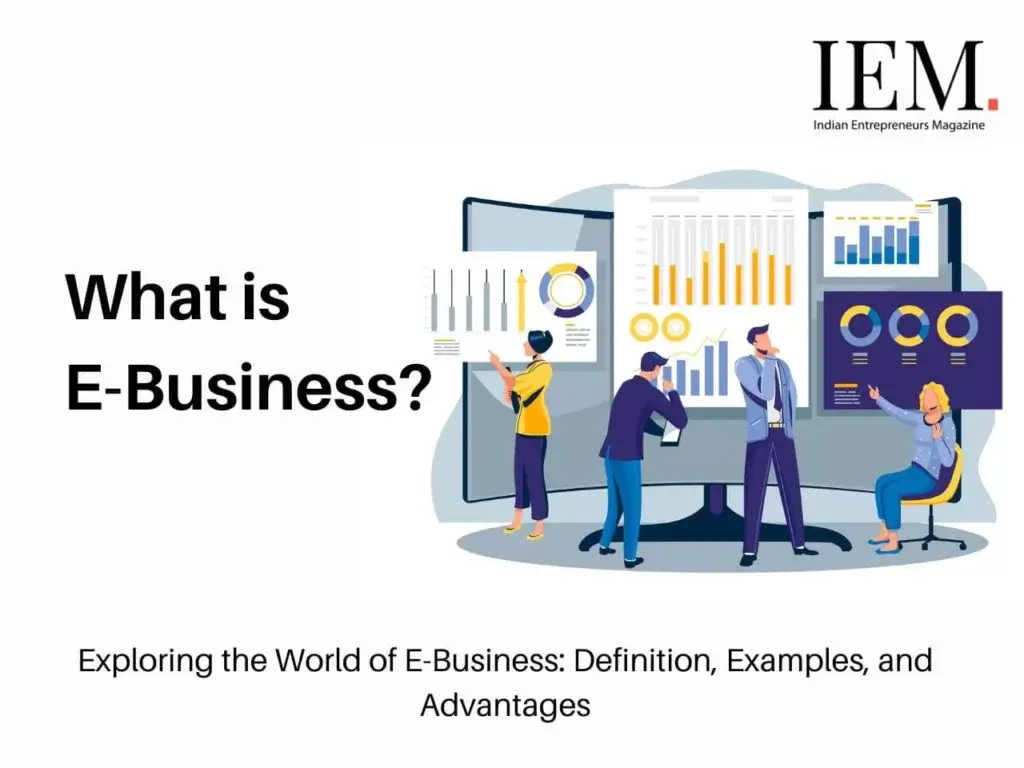Exploring the World of E-Business: Definition, Examples, and Advantages
In today’s digital age, e-business has become an integral part of the global economy. This article aims to provide an in-depth understanding, covering its definition, examples, advantages, and various types. Additionally, we will explore the relationship between e-business and e-commerce, and delve into the digital economy and different types of e-commerce models.
Defining E-Business
E-business, short for electronic business, refers to the utilization of digital technologies, primarily the internet, to conduct business operations. It involves the integration of electronic systems and networks into various aspects of an organization, including communication, collaboration, transaction processing, and customer relationship management. Unlike traditional business models, electronic business transcends physical boundaries, enabling companies to expand their reach, streamline processes, and engage with customers on a global scale.
Examples of E-Business
E-business encompasses a wide range of applications across diverse industries. Let’s explore a few notable examples:
- Online Retail: E-commerce giants like Amazon and Alibaba have revolutionized the retail sector, offering a vast array of products and services through their online platforms.
- Digital Banking: Banks have embraced e-business by providing online banking services, enabling customers to perform transactions, manage accounts, and access financial services remotely.
- Online Travel Agencies: Companies like Expedia and Booking.com facilitate travel bookings, reservations, and ticketing services through their e-business platforms.
- E-Learning: Educational institutions and online platforms offer e-learning courses, allowing students to access educational content and engage in virtual classrooms.
- Digital Advertising: Online advertising platforms, such as Google Ads and Facebook Ads, enable businesses to target specific audiences and promote their products or services.
Advantages of E-Business
E-business offers several advantages that contribute to its widespread adoption:
- Global Reach: E-business allows businesses to transcend geographical barriers, reaching customers around the world and expanding their market presence.
- Cost Efficiency: By leveraging digital technologies, companies can reduce operational costs associated with physical infrastructure, inventory management, and staffing.
- Enhanced Customer Engagement: E-business facilitates personalized interactions, enabling businesses to understand and meet customer needs more effectively.
- Increased Speed and Efficiency: Digital transactions and automated processes streamline operations, leading to faster transactions, order processing, and customer service.
- Data-driven Insights: E-business generates vast amounts of data, which can be analyzed to gain valuable insights, improve decision-making, and optimize business strategies.
Types of E-Business
It can be categorized into different types based on its focus and functionality:
- B2C (Business-to-Consumer): Involves transactions between businesses and individual consumers.
- B2B (Business-to-Business): Refers to transactions between businesses, such as suppliers and retailers.
- C2C (Consumer-to-Consumer): Encompasses transactions between individual consumers, often facilitated through online marketplaces.
- C2B (Consumer-to-Business): This occurs when consumers provide products or services to businesses, like freelance work or user-generated content.
- G2C (Government-to-Citizen): Involves government entities providing services to citizens through online platforms.
E-Business vs. E-Commerce
While e-business and e-commerce are related, they are not synonymous. E-commerce refers specifically to online buying and selling of goods and services, focusing on the transactional aspect. On the other hand, e-business encompasses a broader range of activities, including marketing, customer support, collaboration, and supply chain management. In essence, e-commerce is a subset which emphasizing the commercial aspect of online transactions.
The Digital Economy and E-Commerce Modeling Language : E-business operates within the framework of the digital economy, which encompasses all economic activities facilitated by digital technologies. The digital economy encompasses a wide range of industries, including e-commerce, online services, digital marketing, and more. It fosters innovation, job creation, and economic growth by leveraging technology to drive productivity and efficiency.
To facilitate standardized e-commerce operations, the Electronic Commerce Modeling Language (ECML) was developed. ECML provides a common language and framework for describing and conducting e-commerce transactions, ensuring interoperability and seamless integration between different systems and platforms.
Very Large Business Applications (VLBAs)
Very Large Business Applications (VLBAs) refer to complex, enterprise-level software systems that support large-scale e-business operations. These applications handle massive amounts of data, facilitate real-time processing, and provide comprehensive functionality to support various business processes such as supply chain management, customer relationship management, and financial management. VLBAs are designed to handle the complexities and requirements of large organizations, enabling them to operate efficiently and effectively in the digital realm.
Conclusion
E-business has revolutionized the way organizations conduct business, allowing for global reach, cost efficiency, enhanced customer engagement, and data-driven decision-making. With various types such as B2C, B2B, C2C, C2B, and G2C, companies can choose the model that aligns with their objectives. As the digital economy continues to evolve, electronic business will play a pivotal role in shaping the future of commerce and driving economic growth.


One thought on “What is E-Business?”
Comments are closed.